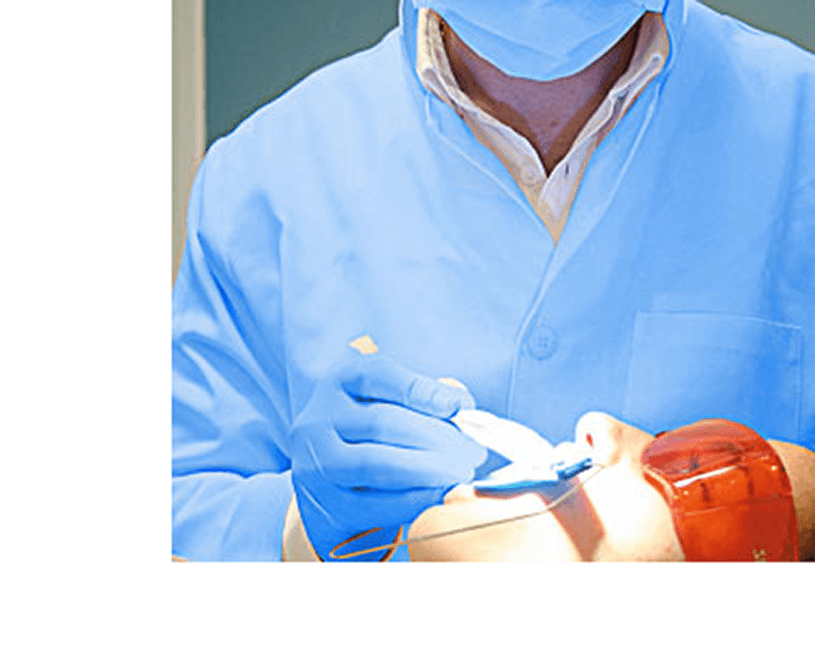
Photodynamic Therapy Radiometers & Spectrometers
Photodynamic Therapy is a special type of phototherapy aimed at treating cancer
Photodynamic Therapy involves the use of optical radiation in the cure of medical maladies. Phototherapy is defined as the treatment of medical, psychological, or cosmetic conditions by exposure to light. Photodynamic Therapy or PDT is a specialized type of phototherapy for the treatment of cancers and, like some phototherapy treatments, uses photosensitizers, but in a different way.
Photosensitizers are chemicals that increase the sensitivity of an organism either locally or systemically to exposure to light. In generalized phototherapy, the light source produces the desired effect directly with the photosensitizer increasing the efficiency but the treatment can be done with just the light source.
In Photodynamic Therapy the photosensitizer, which is a required component, reacts to exposure from the light source producing a byproduct that itself is highly reactive with the undesirable tissue cells and is the actual treatment.
Careful control of and exposure to the light source is critical for successful treatment
Photodynamic Therapy photosensitizers are specifically designed to be attracted to or absorbed by metabolically fast cells such as cancer cells and may be directly delivered to the treatment site, taken orally, or intravenously.
Once the photosensitizer has been delivered, the site is exposed to a specific spectral band of light causing a series of reactions in the photosensitzer resulting in the formation of singlet oxygen. The singlet oxygen is itself a very aggressive chemical species causing damage to certain biological cells. That damage is confined to areas where the photosensitizer is present and then exposed to the PDT light source.
In this respect, Photodynamic Therapy is a very selective form of treatment since the mobility of the photosensitizer can be varied by delivery method and specific cells can be targeted by the careful design of the photosensitizer compounds. Even if other tissues have attracted or absorbed the photosensitizer and will be effected by the reaction, their unwanted damage is avoided by precise exposure of the desired treatment site to the PDT light source.
Because of the high exposure precision required, lasers are often used due to their focused output and visible light output, which is the predominant portion of the spectrum used in PDT treatments. However, if a wavelength of light is required that is not producible from a laser or when a broader spectral output is needed, other types of light sources can be delivered to the treatment site with pinpoint accuracy via fiber optics.
Photodynamic Therapy light source measurement solutions
Monitoring the amount of exposure to a PDT light source is absolutely critical in preventing unwanted tissue damage to the patient while maintaining the desired efficacy.
International Light Technologies has a selection of Photodynamic Therapy-specific systems designed for highly accurate intensity, exposure, and spectral wavelength measurement of a wide array of PDT light sources in both laboratory and clinical environments. ILT meters come with NIST traceable, ISO/IEC 17025:2017 accredited calibrations in units of Watts, Lumens, Watt/cm2, lux and foot-candles as well as full spectrum analysis. Input optics, including small cosine receptors, integrating spheres, narrow beam adapters and apertures (for testing uniformity) can be added to ILT systems making them the most versatile systems available.
ILT engineers and technical support staff are available to customize systems to the unique requirements of our customers.
Selecting a System
Use the table below to identify the system (meter + detector) that meets your specific application. Use the table to find the spectral range you wish to measure. The table can be filtered to show our meters by type, (e.g., hand-held), as well as searching on the minimum and maximum spectral range you wish to measure. The tables can also be sorted to group systems by meter type, spectral range, measurement range, and units. Click the product link of the system to view it's details.
Need assistance? Contact us using the form below, or by calling us at 978-818-6180.
* All Radiometers/Photometers/Spectroradiometers are NIST Traceable.
* If units of measure are not shown please contact us (empirical units also available i.e. fc, fL, nits, lm/ft²).
< Back to Light Measurement Systems
Explore All Light Meters By Application Type
- Germicidal UV Radiometers & Spectrometers
- UV Curing Light Measurement Systems
- Audience Scanning Radiometers & Spectrometers
- Endoscopic System Light Meters
- Pulsed Light Measurement Systems
- LED Testing & Measurement
- Low Light Level Measurement
- Optical Radiation Hazard Light Meters
- Photodynamic Therapy Radiometers & Spectrometers
- Photometric Spectral Light Meters
- Photoresist Radiometers & Photometers
- Photostability UVA Detectors
- Phototherapy Light Meters & Radiometers
- Plant Photobiology & Photomedicine Light Meters
- Radiometry Light Meters
- Solar Radiation Light Meters
